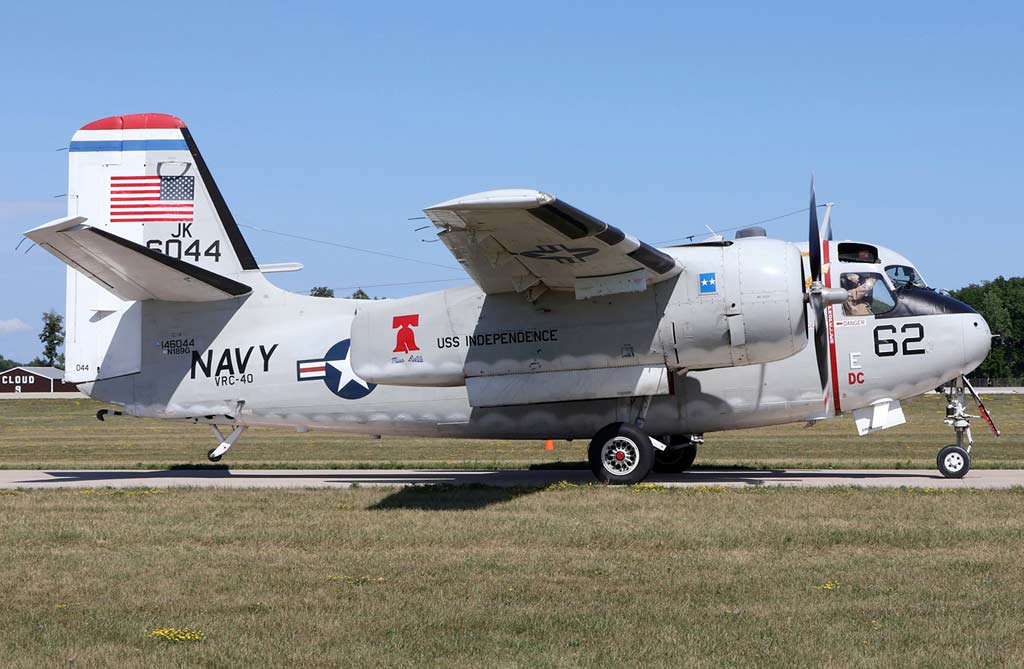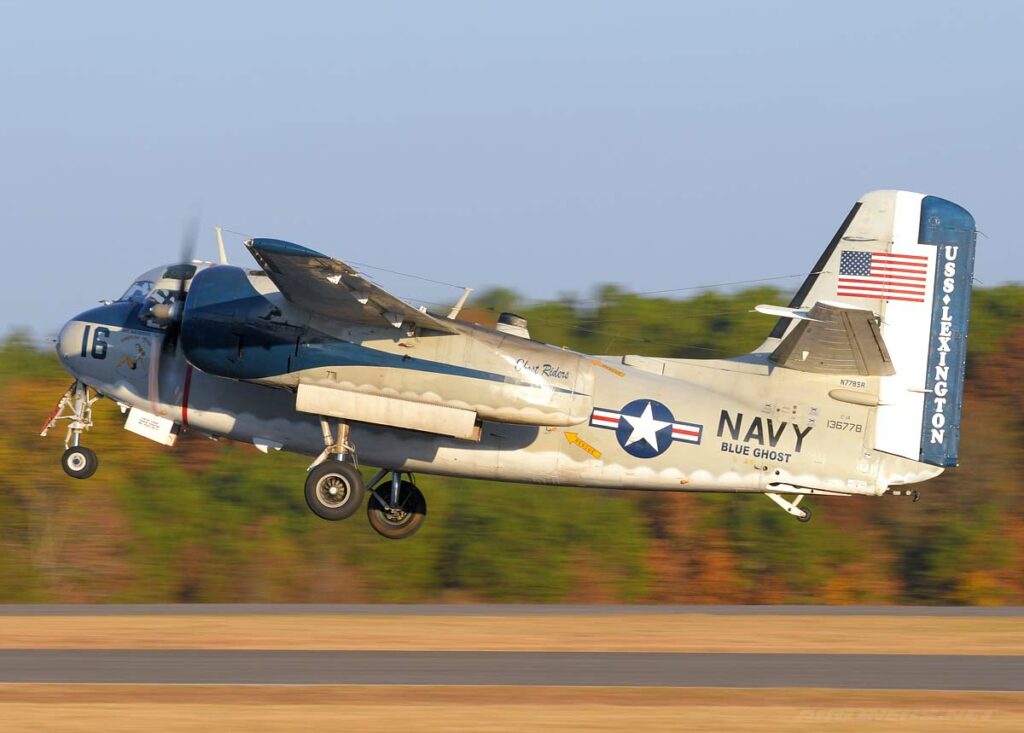The C-1A Trader is a carrier onboard delivery (COD) aircraft, designed for transport and logistics support.
In brief
The Grumman C-1A Trader was a carrier onboard delivery (COD) aircraft, derived from the S-2 Tracker. Introduced in the 1950s, it primarily served the U.S. Navy, providing critical logistics support by ferrying cargo, mail, and personnel between shore bases and aircraft carriers. The C-1A was known for its robust design, reliable performance, and significant payload capacity. With its twin-engine, high-wing layout, and carrier capability, it was a vital link for U.S. naval operations until it was retired and replaced by more advanced aircraft.
In the context of post-World War II military advancements, the U.S. Navy identified a need for an efficient, reliable means of transporting supplies and personnel to its fleet of aircraft carriers. The Grumman C-1A Trader was developed to meet this need, offering a specialized solution that combined carrier operability with significant cargo capacity.

History of the Development of the Grumman C-1A
During the 1950s, the U.S. Navy sought to enhance its logistical capabilities, particularly for its carrier strike groups, which were increasingly important in global strategic posturing. The Grumman Aircraft Engineering Corporation, renowned for its robust naval aircraft, developed the C-1A Trader based on the successful S-2 Tracker airframe.
The program was launched to provide a dedicated Carrier Onboard Delivery (COD) capability, ensuring rapid, reliable transport of essential supplies, mail, and personnel to and from carriers at sea. The C-1A first flew in the mid-1950s and quickly became an integral part of naval operations, known for its adaptability and endurance.
Design of the Grumman C-1A
The Grumman C-1A was a high-wing, twin-engine monoplane with a robust structure capable of withstanding the rigors of carrier operations. Its design was a modification of the Grumman S-2 Tracker, retaining the overall layout but with a fuselage adapted for cargo and passenger transport. The aircraft had a length of approximately 42 feet (12.8 meters) and a wingspan of 69 feet (21 meters).
One of its key design features was the large cargo door, facilitating easy loading and unloading of goods and personnel. The C-1A could carry a significant payload and was equipped with folding wings, allowing it to be stored more efficiently on carriers. However, its size and performance were always a balance between cargo capacity and the limitations of carrier-based operations.
Performance of the Grumman C-1A
The C-1A Trader was powered by two Wright R-1820-82WA radial engines, providing a reliable and robust power source. It had a top speed of around 287 mph (461 km/h) and a range of approximately 1,300 miles (2,092 km), making it well-suited for the quick transport of cargo and personnel over the vast distances typical of naval operations.
While not designed for speed or combat, the Trader’s performance was specifically tailored to the unique requirements of COD missions. Its ability to operate from carriers, coupled with a considerable range and payload, made it an invaluable asset to the U.S. Navy, despite the availability of faster or more versatile aircraft.
Variants of the Grumman C-1A
The primary variant of this aircraft was the C-1A Trader itself, which saw various updates and modifications throughout its service life to enhance its performance and reliability. The Trader was essentially a single model focused on the COD role, with changes primarily related to avionics, engine performance, and structural improvements over time.

Military Use and Combat of the Grumman C-1A
The C-1A Trader was not a combat aircraft but played a vital supporting role in military operations. It served the U.S. Navy from the 1950s until its eventual retirement, participating indirectly in many Cold War-era conflicts by ensuring that carrier groups remained supplied and ready for action. The C-1A performed countless missions ferrying everything from critical spare parts and medical supplies to mail and personnel, maintaining the lifeline between sea-based forces and mainland resources.
While the Trader was not sold to other countries or used in direct combat, its operational success set standards for subsequent COD aircraft. It was eventually replaced by more modern aircraft like the C-2 Greyhound, which continued the COD legacy with greater capacity and range.
The Grumman C-1A Trader exemplifies the essential yet often overlooked aspect of military operations: logistics and support. As a dedicated carrier onboard delivery aircraft, it played a crucial role in maintaining the operational effectiveness of the U.S. Navy’s carrier fleets. Its robust design, adaptability, and reliability made it a valuable asset for decades, reflecting the importance of logistical support in modern naval warfare. Even as newer aircraft have taken over its role, the legacy of the C-1A Trader continues in the vital mission of keeping naval forces supplied and ready across the globe.
Back to Transport planes.